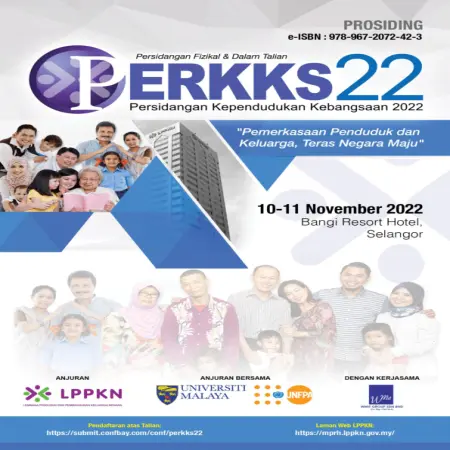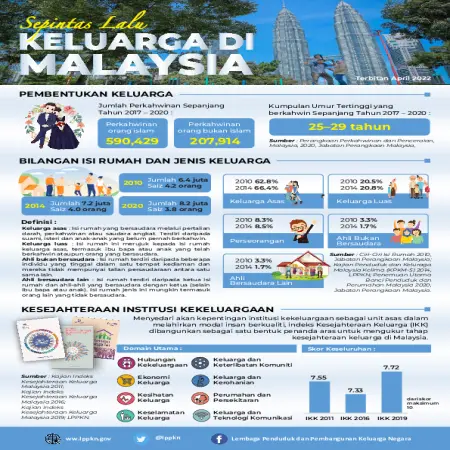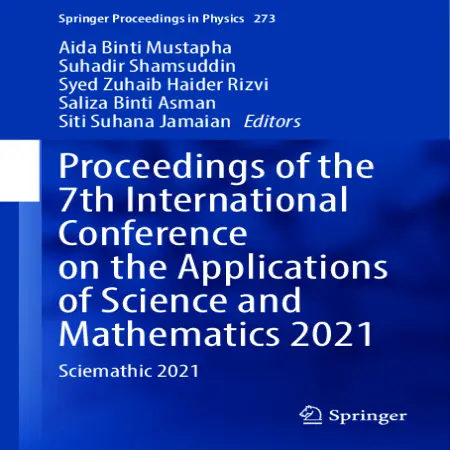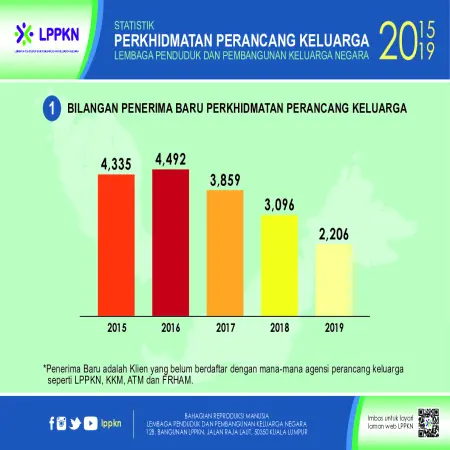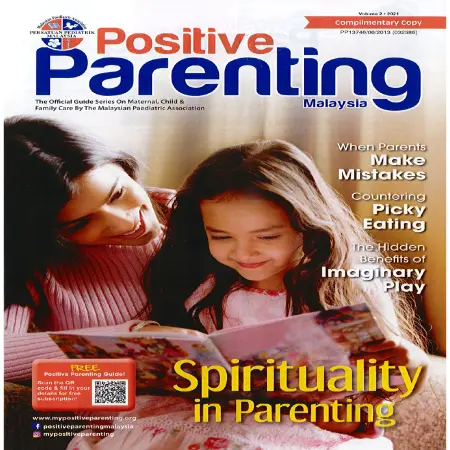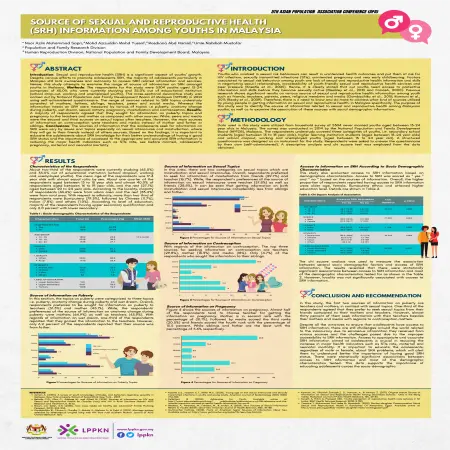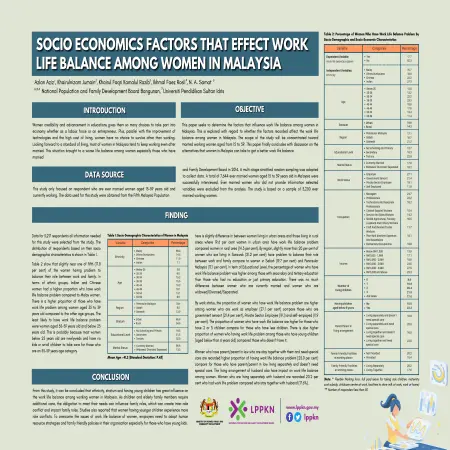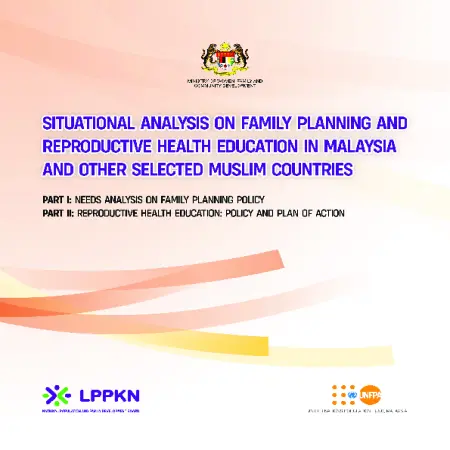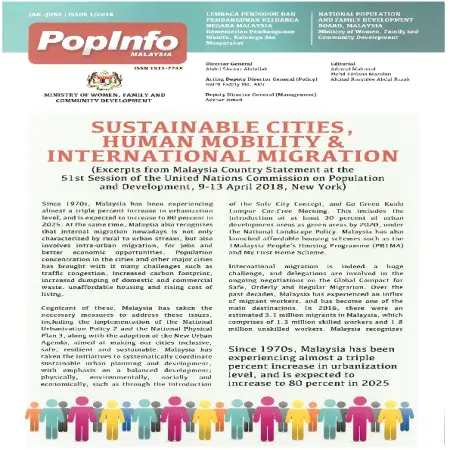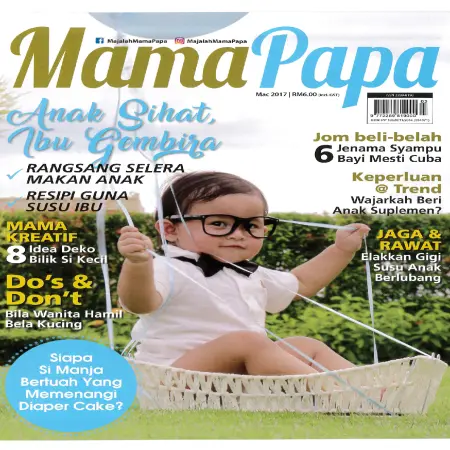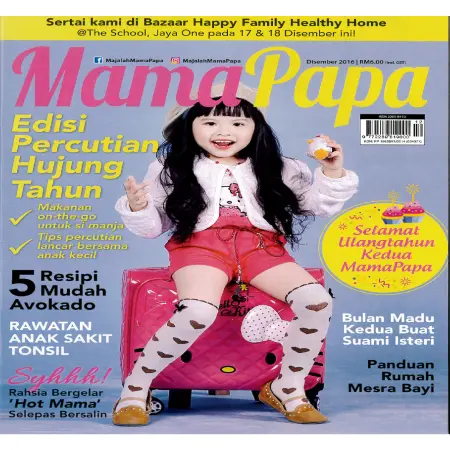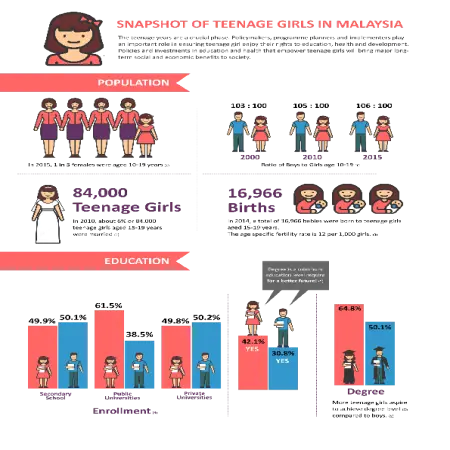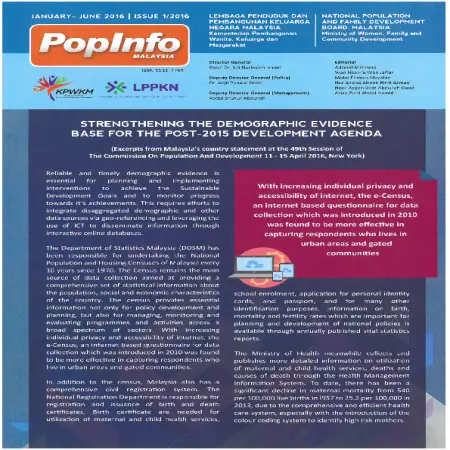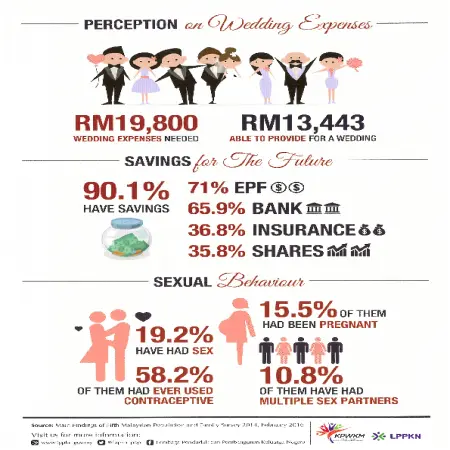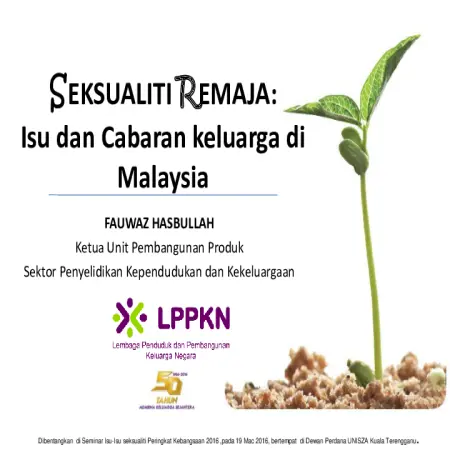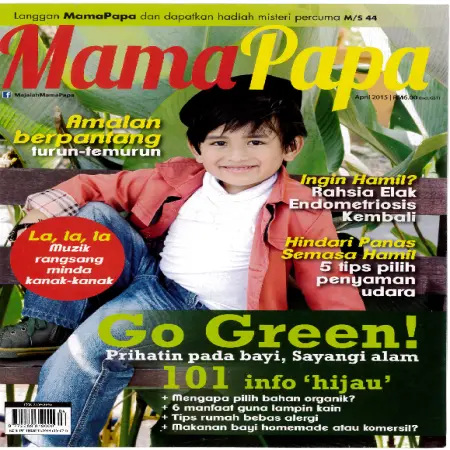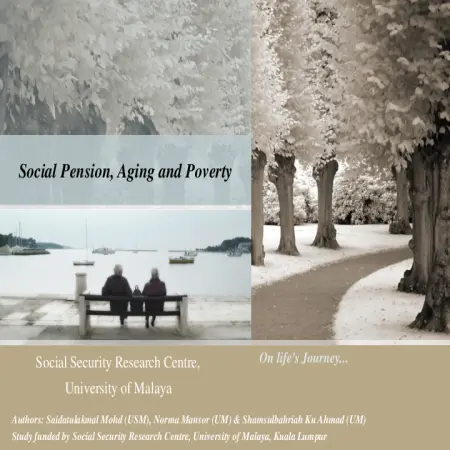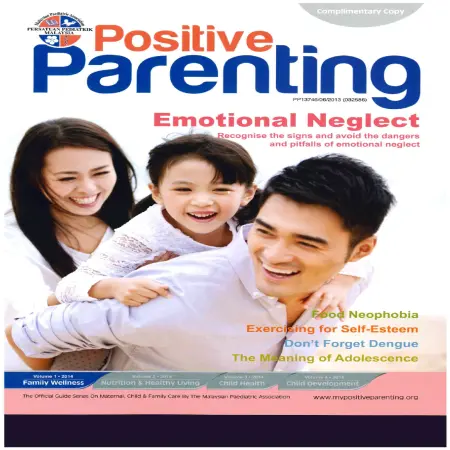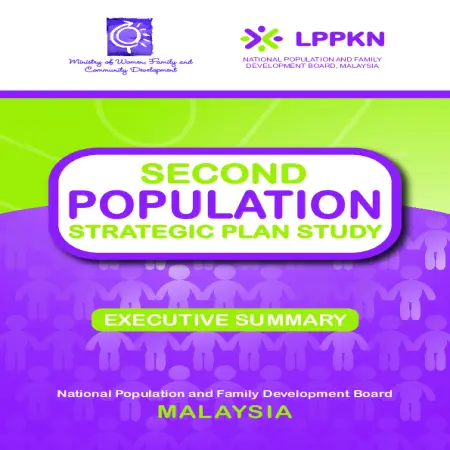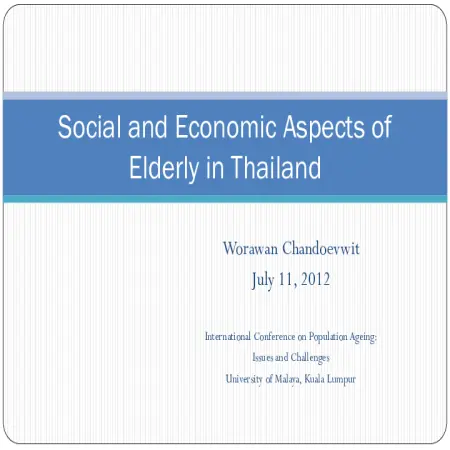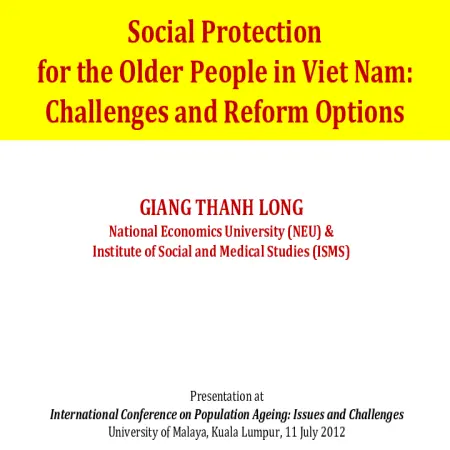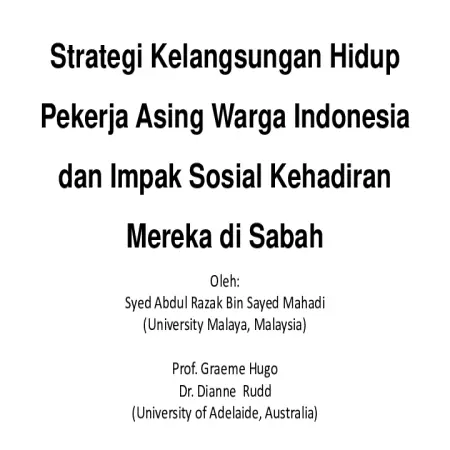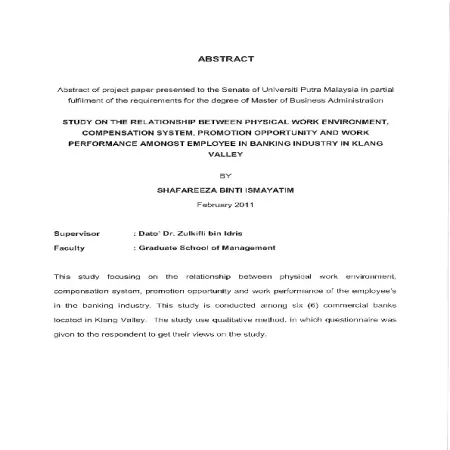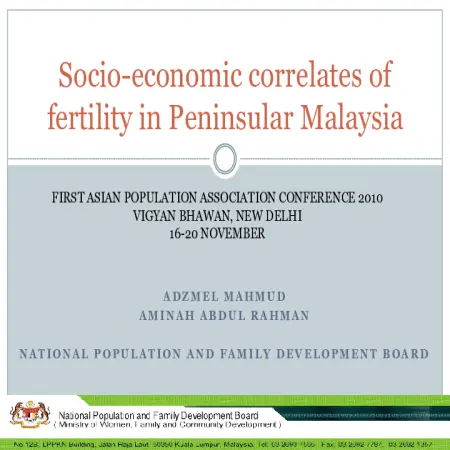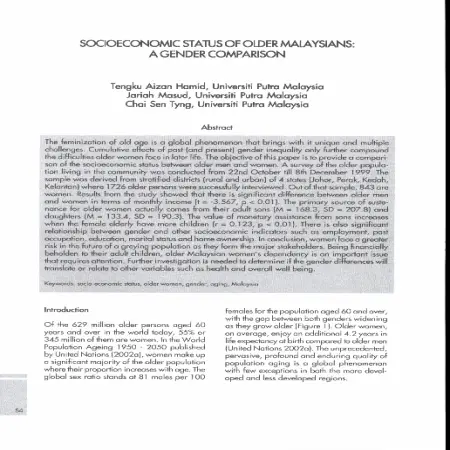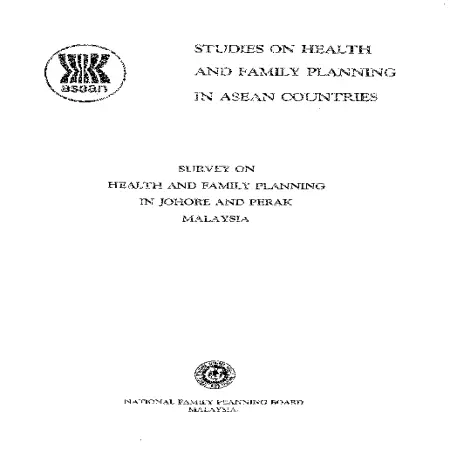Browse by Type
2024 (2)
|
Suara Keluarga, Masa Depan Negara: Kajian Penduduk dan Keluarga Malaysia Keenam (KPKM-6) 2024
Item Type: Video
Year: 2024
Abstract: The Sixth Malaysian Population and Family Survey (MPFS-6) 2024 is the sixth study in a series of surveys conducted by the National Population and Family Development Board (NPFDB) since 1974. This study aims to provide up-to-date information and time-series data related to population,...[Read More]
|
|
|
|
|
|
SDGS and the impact of megatrends on Families: perspectives from Malaysia
Item Type: Conference or Workshop Item
Year: 2024
Abstract: 57th Commissions on Population and Development (CPD57): Assessing the status of implementation of the Programmed of Action of the International Conference on Population and Development and its contribution to the follow-up and review of the 2030 Agenda for Sustainable Development...[Read More]
|
|
|
|
|
2022 (4)
|
Stress dan tahap kesejahteraan sosial pasca pandemik covid19: Satu tinjauan
Item Type: Book Section
Editor:
Year: 2022
Abstract: Since the start of the Coronavirus Disease 19 (COVID-19) pandemic in late 2019, the highest daily deaths recorded in Malaysia were 408 and until the end of the pandemic period, on 30 March 2022, the cumulative death toll was over 35,800 deaths. Throughout the pandemic phase, every...[Read More]
|
|
|
|
|
|
Socio demographics determinants of contraceptive use among women in Malaysia: logistic regression model
Item Type: Book Section
Editor:
Year: 2022
Abstract: Family planning could be defined as the ability of individuals and couples to anticipate and achieve their births. There are many types of contraceptive methods that can be used in family planning that could divided into two categories; namely modern and non-modern contraceptives...[Read More]
|
|
|
|
|
|
Statistik data perkhidmatan perancang keluarga LPPKN tahun 2015-2019
Item Type: Report
Year: 2022
Abstract: National Population and Family Development Board Malaysia (NPFDB) have prepared a statistic report on family planning services at the NPFDB level according to the number of new recipients, type of contraceptive, state, age group, ethnicity, strata and employment status for 2015 to...[Read More]
|
|
|
|
|
2021 (3)
|
Spirituality in parenting
Item Type: Article
Year: 2021
Abstract: The emergence of COVID-19 since last year has cause an unprecendented health crisis across the globe, affecting people physically, mentally, financially and socially. To alleviate the difficulties and stresses in dealing with the pandemic and ensuing lockdowns, multiple approaches have...[Read More]
|
|
|
|
|
|
Source of sexual and reproductive health (SRH) information among youths in Malaysia
Item Type: Scientific Poster
Year: 2021
Abstract: A majority of respondents agreed that they sought for information on puberty topics and pregnancy to the teachers and mother as compared with other sources. While, peers and media were the second and third sources on sexual topics after teachers. However, the main sources of...[Read More]
|
|
|
|
|
|
Socio economics factors that effect work life balance among women in Malaysia
Item Type: Scientific Poster
Year: 2021
Abstract: This paper seeks to determine the factors that influence work life balance among women in Malaysia. This is explored with regard to whether the factors recorded affect the work life balance among women in Malaysia. The scope of the study will be concentrated toward married working...[Read More]
|
|
|
|
|
2020 (3)
|
Subjective well-being of the Malaysian citizen: preliminary development of survey instrument
Item Type: Article
Year: 2020
Abstract: A questionnaire is a well-known measurement instrument used by most of the researchers when conducting a survey. It is a powerful tool for collecting data in survey research. It should be noted that the quality of a measurement instrument used plays a key role in ensuring the quality...[Read More]
|
|
|
|
|
|
Situational analysis on family planning and reproductive health education in Malaysia and other selected Muslim countries Part I: needs analysis on family planning policy Part II: reproductive health education: policy and plan of action
Item Type: Research Report
Year: 2020
Abstract: This study is an initiative by the Ministry of Women, Family and Community Development (MWFCD) through the National Population and Family Development Board (NPFDB) in collaboration with the United Nations Population Fund (UNFPA), who has been a strategic partner of NPFDB since the...[Read More]
|
|
|
|
|
|
Seroprevalence and factors associated with chlamydia trachomatis Infection among subfertile couples attending local public subfertility clinic
Item Type: Thesis
Year: 2020
Abstract: Chlamydia trachomatis is one of the agents that cause the sexually transmitted infections called chlamydia. People practicing risky sexual behaviours such as having multiple sex partners, exercising sexual intercourse at an early age, and undergoing unprotected sexual
intercourse...[Read More]
|
|
|
|
|
2018 (2)
|
Sustainable cities, human mobility & international migration
Item Type: Newsletter
Editor:
Year: 2018
Abstract: Over the past decades, Malaysia has experienced and influx of migrant workers, and has become one of the main destinations. In 2016, there were an estimated 3.1 million migrants in Malaysia, which comprises of 1.3 million skilled workers and 1.8 million unskilled workers.
|
|
|
|
|
2017 (1)
|
Stress buat lelaki jadi kurang subur?
Item Type: Article
Year: 2017
Abstract: Fertility problems are now increasing from time to time around the world. According to the World Health Organization (WHO 2010), infertility can be rooted; 40% of male factors or and 40% of female factors and 20% are from unknown factors (idiopathy).
|
|
|
|
|
2016 (5)
|
Semarakkan cinta dengan bulan madu
Item Type: Article
Year: 2016
Abstract: The option of having a second honeymoon at a late age of marriage may be something to consider. A second honeymoon is very important for every couple to improve the quality of family life. Couples can talk heart to heart a string of marital life journeys.
|
|
|
|
|
|
Strengthening the demographic evidence base for the post-2015 development agenda
Item Type: Newsletter
Editor:
Year: 2016
Abstract: In Malaysia, the implementation of the post-2015 development agenda has obtained the highest political commitment at the national level and has continuously involved multi-stakeholders engagement under the 11th Malaysia development plans (2016-2020). Malaysia will also further improve...[Read More]
|
|
|
|
|
2015 (2)
|
Selamatkah mainan anak anda?
Item Type: Article
Year: 2015
Abstract: Children's toy can help the educational and developmental process of children at an early age. However, the selection of children's toys needs to be done wisely especially if it involves safety aspects. If parents do not carefully choose toys, it can invite danger to the safety of...[Read More]
|
|
|
|
|
|
Sosialisasi dan kawalan sosial dalam kehidupan remaja berisiko: kajian kes di projek Perumahan Rakyat (PPR) Sri Pahang, Bangsar dan Sri Pantai, Lembah Pantai, Kuala Lumpur
Item Type: Thesis
Year: 2015
Abstract: This study focused on a group of adolescents categorized as adolescents at risk in the People's Housing Project (PPR) area in urban areas. Purpose of the study is to identify and understand the life patterns of at -risk adolescents includes their involvement in deviant behavior, the...[Read More]
|
|
|
|
|
2014 (3)
|
Seminar Antarabangsa Kekeluargaan di Persada Johor pada 13 Februari 2014.
Item Type: Video
Year: 2014
Abstract: Johor College of Islamic Studies (MARSAH) in collaboration with the National Population and Family Development Board (NPFDB), Ministry of Women, Family and Community Development and Johor Bahru City Council (JBCC) took the initiative to organize the International Conference on Family...[Read More]
|
|
|
|
|
|
Social pension, aging and poverty in Malaysia
Item Type: Conference or Workshop Item
Year: 2014
Abstract: The increasing number of elderly in Malaysia calls for a more stringent policy to safeguard the well-being of the elderly. The old age protection such as the pension scheme, Employees Provident Fund and the old age cash assistance although in tact, deemed to be inadequate to eradicate...[Read More]
|
|
|
|
|
|
Sharing responsibilities
Item Type: Article
Year: 2014
Abstract: Traditionally, women have assumed the role of the caregiver, while husbands sought to provide financial support for their families. Society has come a long way since and women are now leaders and working professionals in their own right.
Increasingly, the domain of marriage is...[Read More]
|
|
|
|
|
2013 (1)
|
Socio-economic determinants of pap smear screening among married women in Peninsular Malaysia
Item Type: Article
Year: 2013
Abstract: This study is to identify the influences of socio-economic factors towards the practice of Pap smear screening among ever married women. Bivariate correlations and logistic regression analysis was applied to the data set containing 3,283 ever married women age 15-49 years, interviewed...[Read More]
|
|
|
|
|
2012 (5)
|
Second Population Strategic Plan Study : Executive Summary
Item Type: Book
Year: 2012
Abstract: The Second Population Strategic Plan Study was conducted from July 2008 – December 2009 by the Ministry of Women, Family and Community Development through the National Population and Family Development Board. This study is a follow-up to the 1st Population Strategic Plan Study...[Read More]
|
|
|
|
|
|
Strengthening Malaysian families: evidence based interventions
Item Type: Conference or Workshop Item
Year: 2012
Abstract: Malaysian families today are facing numerous challenges related to changing family relationships, values, need for work life balance and support systems. Some of these key challenges are as a result of a new family forms, postponement of marriage, declining fertility and effects of...[Read More]
|
|
|
|
|
|
Social and economic aspects of elderly in Thailand
Item Type: Conference or Workshop Item
Year: 2012
Abstract: Thailand is already an aging society. About 14% of population are elderly. Using a national survey, it can be shown that 16% of elderly households in the rural area have substandard living condition. The majority of elderly (60%) rely on remittance for their living. About 20% of...[Read More]
|
|
|
|
|
|
Social protection for the older people in Vietnam: challenges and reform options
Item Type: Conference or Workshop Item
Year: 2012
Abstract: This paper aims to argue that the Vietnamese population has been aging more quickly than expected, and as such policies toward an aging population, particularly delivery of social protection services for the aged, should be well-prepared from now in order to have older and wealthier...[Read More]
|
|
|
|
|
|
Strategi kelangsungan hidup pekerja asing warga Indonesia dan implikasi sosial akibat kehadiran mereka di Sabah
Item Type: Conference or Workshop Item
Year: 2012
Abstract: Sabah's direction focuses on the development of 3 main sectors such as agriculture, tourism and manufacturing to drive the economy. As an agro -economy -based state, the 2010 census recorded 30 per cent of the total workforce engaged in the agricultural sector. As locals are not...[Read More]
|
|
|
|
|
2011 (1)
|
Study on the relationship between physical work environment, compensation system, promotion opportunity and work performance amongst employee in banking industry in Klang Valley
Item Type: Thesis
Year: 2011
Abstract: This study focusing on the relationship between physical work environment, compensation system, promotion opportunity and work performance of the employee's in the banking industry. This study is conducted among six (6) commercial banks located in Klang Valley. The study use...[Read More]
|
|
|
|
|
2010 (1)
|
Socio-economic correlates of fertility in Peninsular Malaysia
Item Type: Conference or Workshop Item
Year: 2010
Abstract: To examine fertility trends and differentials among women in Peninsular Malaysia by selected socioeconomic variables which significantly influence the number of children ever born. A total of 3,697 ever-married women aged 15-49 were successfully interviewed in Peninsular Malaysia.
|
|
|
|
|
2009 (1)
|
Socio-economic correlates of fertility in Peninsular Malaysia
Item Type: Thesis
Year: 2009
Abstract: The main aim of this paper is to examine the fertility trends and differentials among Peninsular Malaysia women based on the 2004 Malaysian Population and Family Survey (MPFS-4) according to selected socio-economic variables which were found to have significant effect on number of...[Read More]
|
|
|
|
|
2006 (1)
|
SMARTSTART module
Item Type: Module
Year: 2006
Abstract: Couples planning to get married must be well prepared in order to create a harmonious marriage. Hence, the National Population and Family Development Board organises the SMARTSTART Premarital Programme for couples who are planning to get married and those who have recently married (not...[Read More]
|
|
|
|
|
2004 (1)
|
Socioeconomic status of older Malaysians: a gender comparison
Item Type: Article
Year: 2004
Abstract: The feminization of old age is a global phenomenon that brings with it unique and multiple challenges. Cumulative effects of past (and present) gender inequality only further compound the difficulties older women face in later life.The objective of this paper is to provide a comparison...[Read More]
|
|
|
|
|
1998 (1)
|
Study on childcare & parenting styles among working parents in Peninsular Malaysia 1998
Item Type: Research Report
Year: 1998
Abstract: The Study on Childcare and Parenting Styles among working Parents in Malaysia is one of the three research issues on the family that has been identified by the Ministry of National Unity and Social Development under the "Pelan Induk Tindakan Sosial (PINTAS)". This survey is timely in...[Read More]
|
|
|
|
|
1982 (1)
|
Survey on health and family planning in Johore and Perak Malaysia
Item Type: Research Report
Year: 1982
Abstract: The Malaysian project on Studies on Health and Family Planning aims to make a comprehensive analysis of the state of the health care and family planning service and delivery systems in Malaysia to enable health and population planners and administrators in more effective planning and...[Read More]
|
|
|
|
|
1979 (2)
|
Study on childcare needs of low income women in urban Malaysia
Item Type: Research Report
Year: 1979
Abstract: The project "Child care needs of low income women" focused on the needs of families of each ethnic group in urban Kuala Lumpur. Nearly 500 couples, both husbands and wives, were interviewed to determine the differing problems faced by working and nonworking women in their effort to...[Read More]
|
|
|
|
|
|
Study on migration: study of four major cities in Peninsular Malaysia
Item Type: Research Report
Year: 1979
Abstract: This study aims at providing some information about the origin of the migrants in terms of place of birth and previous residence and reason for making the moves. The problem of excessive population growth rate in the metropolitan areas of less developed countries has been a major area...[Read More]
|
|
|
|
|
1978 (2)
|
Study on the evaluation of the effectiveness of IEC materials in family planning programme
Item Type: Research Report
Year: 1978
Abstract: The objectives of the study are: i) to determine the extent to which IEC (information,education and communication) printed materials have had an effect on creating a favourable attitude towards the concept of planned parenthood, ii) to gauge the actual needs of the people with regards...[Read More]
|
|
|
|
|
|
Study of integration project of family planning and parasite control
Item Type: Research Report
Year: 1978
Abstract: The objectives of this study is to make plans to offers in and give information about family planning services and parasite control and to establish and strengthen family planning services in line with national planning and policy.
|
|
|
|
|







